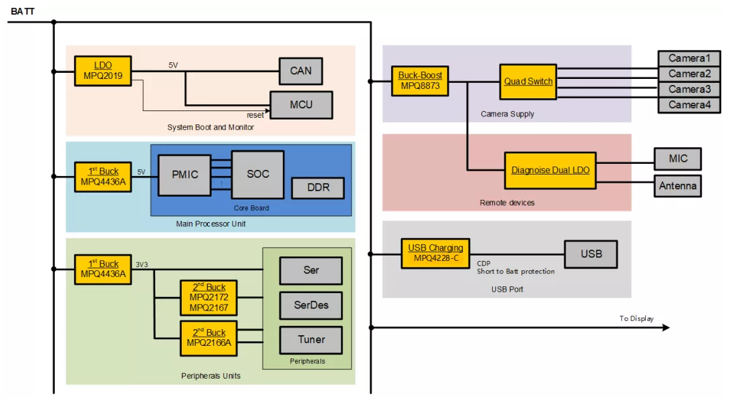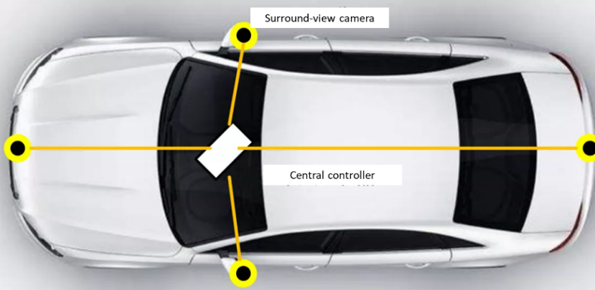
Overview
The automotive infotainment system, also known as the vehicle-mounted machine, is a comprehensive information processing system based on the vehicle body bus system and internet services. This article will specifically discuss the challenges faced in the power supply design for the surround-view camera and USB ports in the vehicle-mounted system.
As shown in Figure 1, the power architecture of the vehicle-mounted machine includes the relevant components for camera power and USB charging.

▲ Figure 1: Power Architecture for Camera Power and USB Charging Applications
The solutions provided by MPS can help designers meet the requirements for surround-view camera power and USB charging applications.
Surround-View Camera Power Solutions
Integrating the image processing of the surround-view camera into the main processor of the vehicle-mounted machine is a new requirement in the current development of vehicle-mounted systems. As shown in Figure 2, the surround-view camera modules are generally distributed around the vehicle, transmitting data and power to the central processor (CPU) located in the cockpit through long-distance coaxial cables.

▲ Figure 2: Surround-View Camera Transmitting Data to CPU
Generally speaking, the internal power supply of the camera module is below 5V. However, considering the voltage drop over long distances or other reasons (such as cold crank), some OEMs may set the power supply for the vehicle-mounted camera at around 8V-10V. This power supply requirement poses significant challenges for the automotive battery.
For instance, when the vehicle undergoes tests like